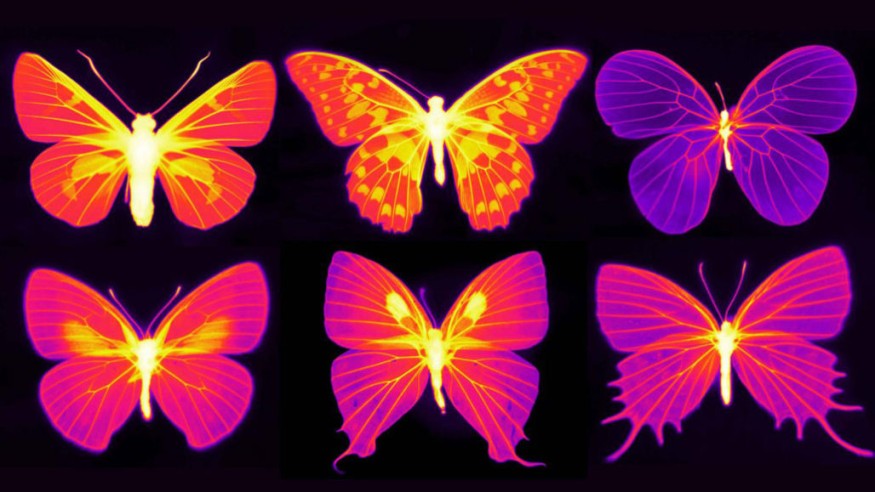
Simple, yet delicate at the same time, butterflies are naturally beautiful--it's just one of those things. But not many of us think about how a small creature, with thin, delicate wings survive under the hot sun.
The answer is in the wing itself. In a recent publication in Nature Communications, scientists have used thermal imaging to show how these seemingly delicate wings release heat to keep the butterfly's wing from overheating. The thermal images show the different living parts of the wing that include the veins and for males, the scent patches that help them release pheromones.
Columbia University applied physicist Nanfang Yu explains that most people have the wrong impression about butterfly wings and whether it is living or not. "People might think that scale-covered butterfly wings are like a fingernail, or a feather of a bird, or human hair-they are lifeless," he said. "But wings are also equipped with living tissues crucial for survival and flight, and high temperatures will make the insect really feel uncomfortable."
Butterflies need heat, but not too much heat
Temperature is a great deal for butterflies as they move around. The muscles in its thorax must be kept warm for the beautiful insect to be able to control its wings, and make them move at the correct speed. At temperatures lower than 82 degrees Fahrenheit, butterflies will not be able to move their muscles well and fly around to survive.
However, since the butterflies flap their wings as fast as they can, the wings heat up at a rate faster than its thorax. This opens a dangerous possibility for the tiny creatures' thin wings to overheat.
Thermal imaging before and today
In the past, scientists had a hard time studying the almost transparent body part of the butterfly. This is because thermal infrared cameras could not identify whether the heat was coming from the butterfly itself, or from its surroundings.
Now, with all the advancements in technology, experts were able to produce such images through infrared hyperspectral imaging. And this technique, is able to measure the temperature and heat emissivity of the wings of at least 50 species of butterflies, at single-scale resolution.
How does it work?
The underlying principle is that thick, hollow materials radiate more heat than thin solid ones. In this case, the butterfly's wing veins are each covered with a thick layer of chitin--that material that supports an insect's exoskeleton. Aside from this, the tube-shaped nanostructures in the male butterfly's scent pads also radiate heat from the wing tissue.
This difference in emission of heat adds to the colorful images produced by the imaging technique.

The experiment
To support this principle, the researchers directed a laser towards the wings of the butterflies. At first, the increase in temperature did not bother them since they were protected by their wing structure. Later on, however, with an intolerable increase in temperature, the butterflies quickly flapped their wings and moved away.
Through the thermal imaging technique, the researchers found that some species have wings that contain a structure that looks like a beating heart. This 'heart' beats to pump hemolymph through the scent pads of some male butterflies.
"A wing must be light for the insect to fly well so it's surprising to find such a structure in the middle of it," Yu explained. "That it exists can only mean that this wing heart is very important for function and health of the scent pad."
© 2026 ScienceTimes.com All rights reserved. Do not reproduce without permission. The window to the world of Science Times.












